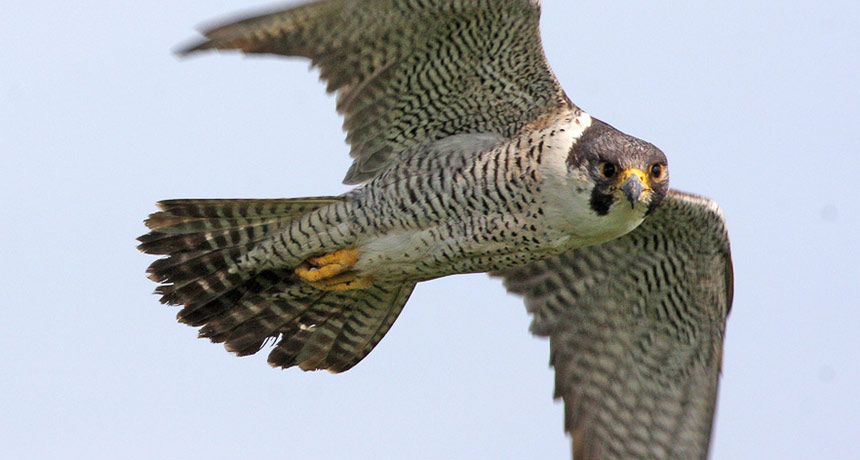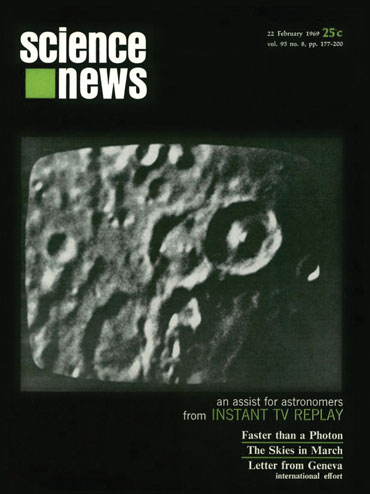50 years ago, DDT pushed peregrine falcons to the edge of extinction
Excerpt from the February 22, 1969 issue of Science News

RAPTORS RECOVERED Peregrine falcon populations are flying high once again after the federal government took steps to protect them in the 1970s.
Ron Knight/Flickr.com (CC BY 2.0)
 Fierce and swift, steel blue in color and called the world’s most perfect flying machine, the peregrine falcon is heading toward extinction in North America. The reason: DDT. Perilously high levels of the pesticide and related chemicals have been found in the eggs, fat and tissues of the birds…. [The falcons] are not picking up the DDT directly, but get it by eating other birds which, in their southern migrations, ingest DDT-contaminated insects. —
Fierce and swift, steel blue in color and called the world’s most perfect flying machine, the peregrine falcon is heading toward extinction in North America. The reason: DDT. Perilously high levels of the pesticide and related chemicals have been found in the eggs, fat and tissues of the birds…. [The falcons] are not picking up the DDT directly, but get it by eating other birds which, in their southern migrations, ingest DDT-contaminated insects. — 





